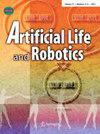对体外心肌细胞进行实时生物仿真刺激的数字硬件系统
IF 0.8
Q4 ROBOTICS
引用次数: 0
摘要
每年,心血管疾病导致全球数百万人死亡。这些疾病涉及复杂的机制,难以研究。为了解决这个问题,我们建议开发一个心脑平台,能够再现产生心跳的机制。该平台将以最经济、最集成的设计实时运行。为此,我们正在 FPGA 上实现高度生物一致性的细胞模型,并将其与体外细胞培养相互连接。在我们的案例中,我们正在使用 Maltsev-Lakatta 细胞模型来刺激心肌细胞培养,该模型描述了负责心律的起搏细胞的行为。本文章由计算机程序翻译,如有差异,请以英文原文为准。
A digital hardware system for real-time biorealistic stimulation on in vitro cardiomyocytes
Every year, cardiovascular diseases cause millions of deaths worldwide. These diseases involve complex mechanisms that are difficult to study. To remedy this problem, we propose to develop a heart–brain platform capable of reproducing the mechanisms involved in generating the heartbeat. The platform will be designed to operate in real time, with the most economical and integrated design possible. To achieve this, we are implementing highly biologically coherent cellular models on FPGA, which we interconnect with in vitro cell cultures. In our case, we are using the Maltsev–Lakatta cell model, which describes the behavior of the pacemaker cells responsible for the heart rhythm, to stimulate a cardiomyocyte culture.
求助全文
通过发布文献求助,成功后即可免费获取论文全文。
去求助
来源期刊

Artificial Life and Robotics
ROBOTICS-
CiteScore
2.00
自引率
22.20%
发文量
101
期刊介绍:
Artificial Life and Robotics is an international journal publishing original technical papers and authoritative state-of-the-art reviews on the development of new technologies concerning artificial life and robotics, especially computer-based simulation and hardware for the twenty-first century. This journal covers a broad multidisciplinary field, including areas such as artificial brain research, artificial intelligence, artificial life, artificial living, artificial mind research, brain science, chaos, cognitive science, complexity, computer graphics, evolutionary computations, fuzzy control, genetic algorithms, innovative computations, intelligent control and modelling, micromachines, micro-robot world cup soccer tournament, mobile vehicles, neural networks, neurocomputers, neurocomputing technologies and applications, robotics, robus virtual engineering, and virtual reality. Hardware-oriented submissions are particularly welcome.
Publishing body: International Symposium on Artificial Life and RoboticsEditor-in-Chiei: Hiroshi Tanaka Hatanaka R Apartment 101, Hatanaka 8-7A, Ooaza-Hatanaka, Oita city, Oita, Japan 870-0856 ©International Symposium on Artificial Life and Robotics
 求助内容:
求助内容: 应助结果提醒方式:
应助结果提醒方式:


